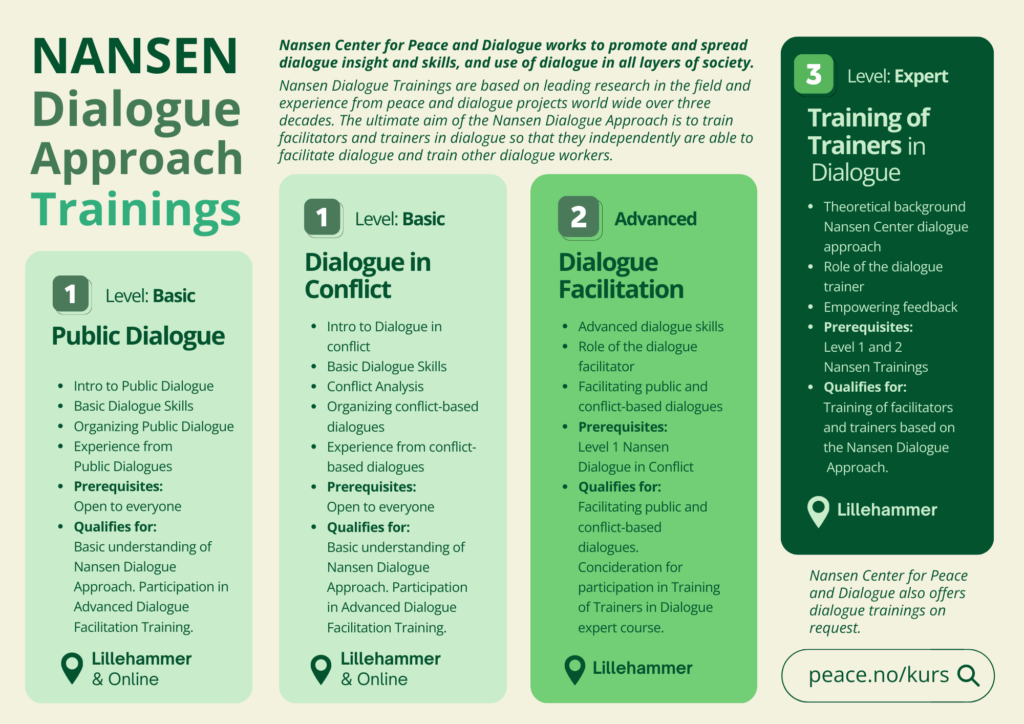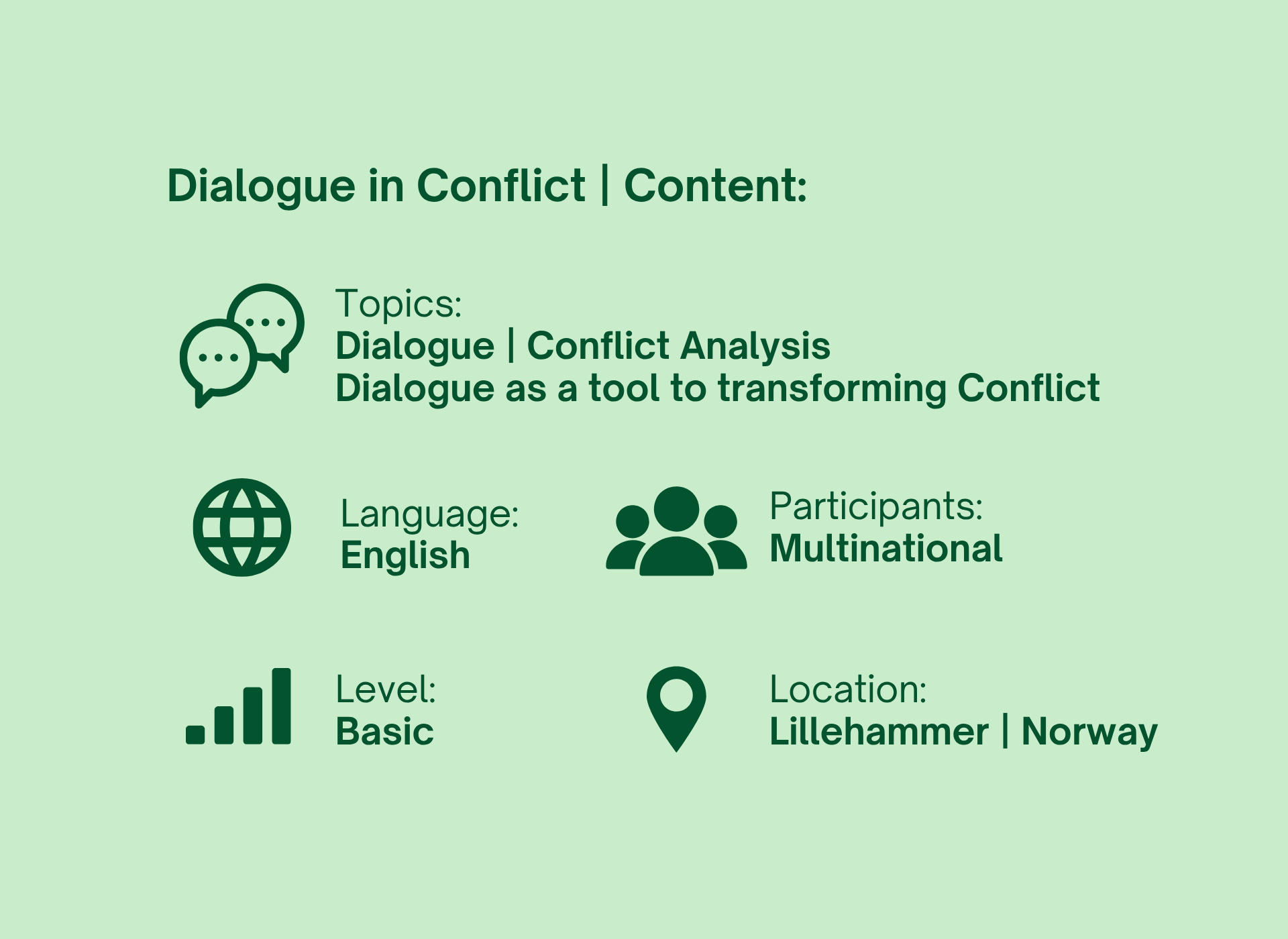This training is for you who is interested in exploring the potential of dialogue to transform conflicts into opportunities, regardless of educational background or profession.
Dialogue is a way of communicating which aims to deepen and challenge our understanding of ourselves and our relation to “the other”, rather than trying to convince or win with arguments and facts. As dialogue creates space for people´s personal thoughts, emotions, experiences, and world views – it enables us to build or rebuild relationships, as well as becoming better communicators.
MAIN COMPONENTS
Identity
Through exercises, you will learn more about yourself and how to build trust in a group. The focus is on the importance of one’s own identity in a communication relationship. This is also an introduction to understanding the dialogue approach.
Introduction to Dialogue
We introduce the Nansen Center for Peace and Dialogue’s approach to dialogue and conflict transformation. Together, we explore the concept of dialogue through exercises where the participants are challenged to reflect on various elements of a dialogue process.
Active Listening and the Art of Asking Good Questions
We are introduced to two basic components of a dialogue: Active listening and dialogical questions. Through exercises, the participants will experience these tools in practice. Participants will also share reflections on how the characteristics needed for active listening and asking good questions can be developed.
Conflict Analysis Tools
Conflict analysis is important in a transformative dialogue process. Based on personal examples, the participants will apply three steps in analyzing a conflict:
- Mapping of the actors, their relationships and how they affect each other. This analysis also includes internal and external factors that can affect a conflict situation.
- Analyzing the root of the conflict and identifying the main challenges.
- The actor’s positions, interests and needs.
Dialogue as a Tool for Transforming Conflict
We introduce and reflect on the role of dialogue in a transformative process based on theoretical perspectives.
The Role of the Facilitator
Brief introduction to the role of the facilitator. Some participants will also have the opportunity to facilitate a dialogue through role play.
Introduction to Public Dialogue
Participants become better acquainted with The Nansen Center for Peace and Dialogue’s public dialogue concept.
Who is the training suitable for?
«Dialogue in Conflict» is an introductory course, addressing various topics that can contribute to transforming conflicts, including tools for communication and conflict analysis. This is a five-day process-oriented course with a series of exercises where the participants actively use their own life experiences.
Read more about Nansen Dialogue Approach
Practical information
DURATION: 5 full days
DATE: March 16th - 20th 2026 (advised arrival on the 15th)
TIME: 09:00–18:00 (CET)
VENUE: Nansen Center for Peace and Dialogue, Lillehammer, Norway
LANGUAGE: English
PARTICIPANTS: Max 14 persons
FEE 1.500 EURO (the fee covers all accommodation costs and meals for the duration of the training)
APPLICATION DEADLINE: February 2nd 2026. Apply sooner if you need visa.
Based on assessment of personal applications and group composition, Nansen Peace Center grants participation in the training. We advice you to apply as soon as you can.
The course does not provide any formal certification, but you will receive a document showing proof of completion at the NCPD.
DIALOGUE is a facilitated conversation based on active listening and explorative questions.


